Intel Xeon E-2246G Benchmarks
For this exercise, we are using our legacy Linux-Bench scripts which help us see cross-platform “least common denominator” results we have been using for years as well as several results from our updated Linux-Bench2 scripts. At this point, our benchmarking sessions take days to run and we are generating well over a thousand data points. We are also running workloads for software companies that want to see how their software works on the latest hardware. As a result, this is a small sample of the data we are collecting and can share publicly. Our position is always that we are happy to provide some free data but we also have services to let companies run their own workloads in our lab, such as with our DemoEval service. What we do provide is an extremely controlled environment where we know every step is exactly the same and each run is done in a real-world data center, not a test bench.
We are going to show off a few results, and highlight a number of interesting data points in this article.
Python Linux 4.4.2 Kernel Compile Benchmark
This is one of the most requested benchmarks for STH over the past few years. The task was simple, we have a standard configuration file, the Linux 4.4.2 kernel from kernel.org, and make the standard auto-generated configuration utilizing every thread in the system. We are expressing results in terms of compiles per hour to make the results easier to read:
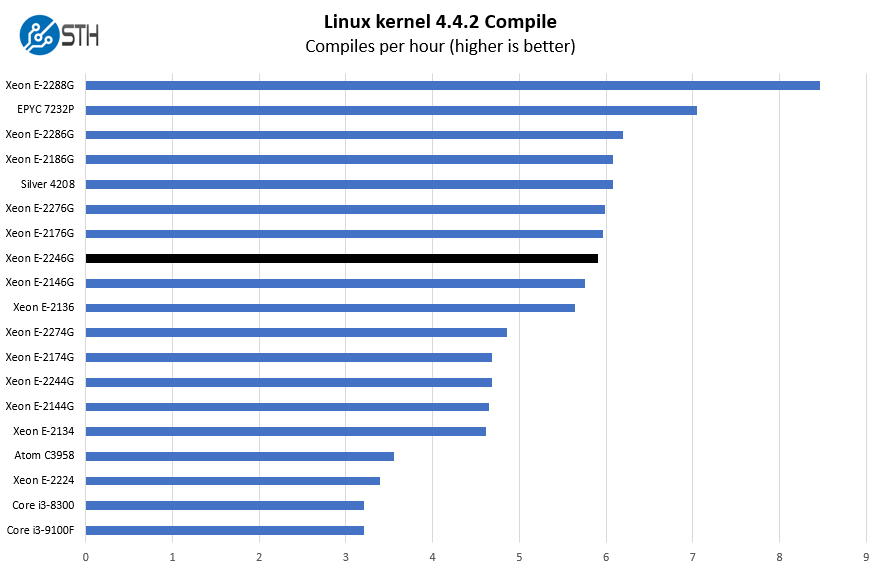
Here we can see that 100MHz-300MHz speed bump work well pushing the Xeon E-2246G to notably higher levels of performance than the Intel Xeon E-2146G. As you will see, with the release of the Xeon E-2246G, we cannot recommend the previous generation anymore. This is a straight improvement across the board.
c-ray 1.1 Performance
We have been using c-ray for our performance testing for years now. It is a ray tracing benchmark that is extremely popular to show differences in processors under multi-threaded workloads. We are going to use our 8K results which work well at this end of the performance spectrum.
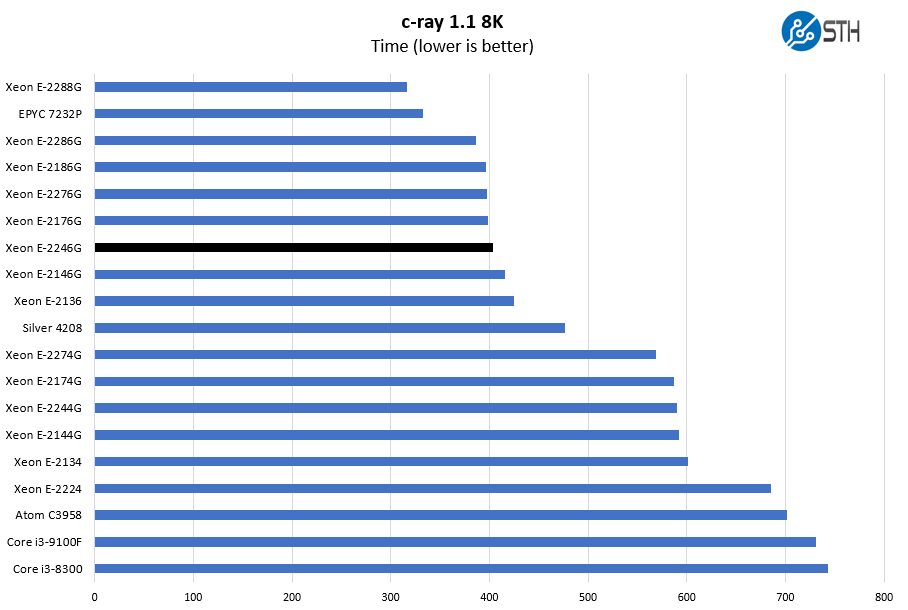
Here we see another improvement. Something to note here is that we normally expect the new upgraded generation to be a full SKU ahead. The Xeon E-2176G still has a 100MHz higher base clock and a 100MHz lower turbo clock so that is not always the case here.
7-zip Compression Performance
7-zip is a widely used compression/ decompression program that works cross-platform. We started using the program during our early days with Windows testing. It is now part of Linux-Bench.
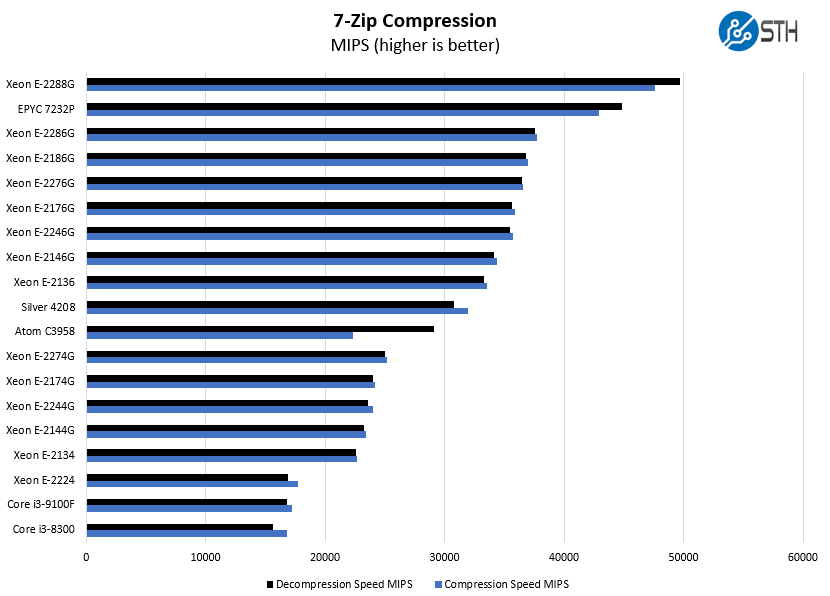
As you can see, the chip actually out-performs the Intel Xeon Silver 4208 here. The Xeon Silver has more platform capabilities and two more cores but also has lower clock speeds which lead to this result.
NAMD Performance
NAMD is a molecular modeling benchmark developed by the Theoretical and Computational Biophysics Group in the Beckman Institute for Advanced Science and Technology at the University of Illinois at Urbana-Champaign. More information on the benchmark can be found here. We are going to augment this with GROMACS in the next-generation Linux-Bench in the near future. With GROMACS we have been working hard to support Intel’s Skylake AVX-512 and AVX2 supporting AMD Zen architecture. Here are the comparison results for the legacy data set:
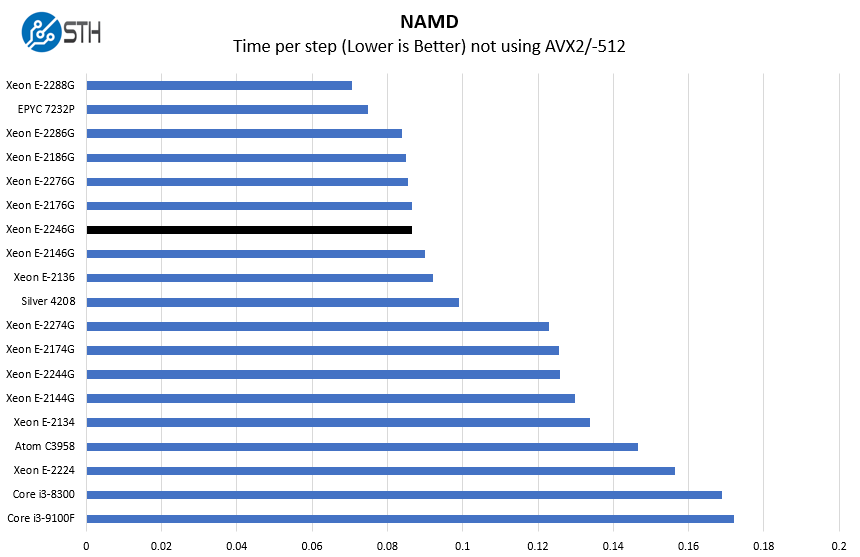
Again we see the Xeon E-2246G show a substantial performance increase over the previous generation. Here it is in a virtual dead heat with the Xeon E-2176G.
Sysbench CPU test
Sysbench is another one of those widely used Linux benchmarks. We specifically are using the CPU test, not the OLTP test that we use for some storage testing.
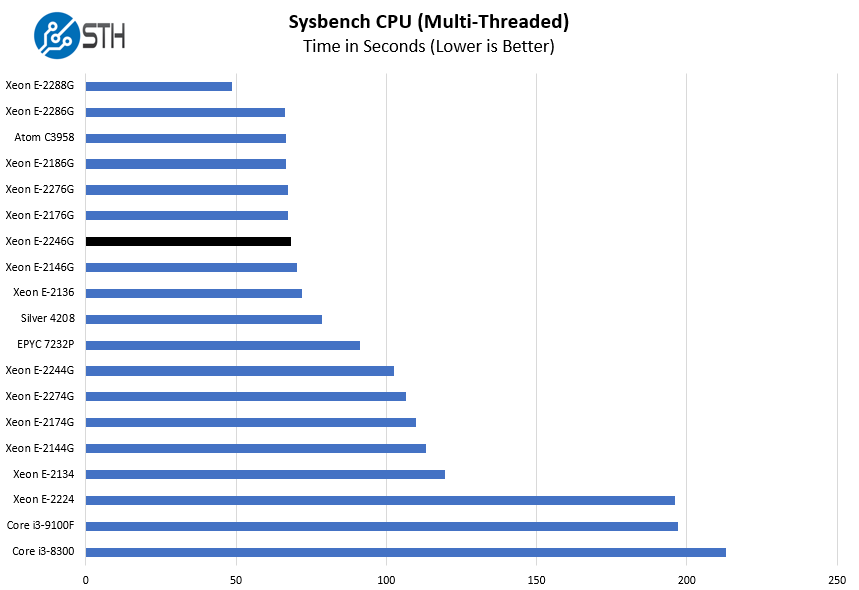
We wanted to note that the increased clock speed also puts this chip ahead of the AMD EPYC 7232P 8-core SKU. The EPYC part enables a much more expansive platform in terms of memory and PCIe footprint, but the Xeon E-2246G is faster at lower power. These are not direct competitors, but we wanted to put some perspective around the numbers we are seeing.
OpenSSL Performance
OpenSSL is widely used to secure communications between servers. This is an important protocol in many server stacks. We first look at our sign tests:
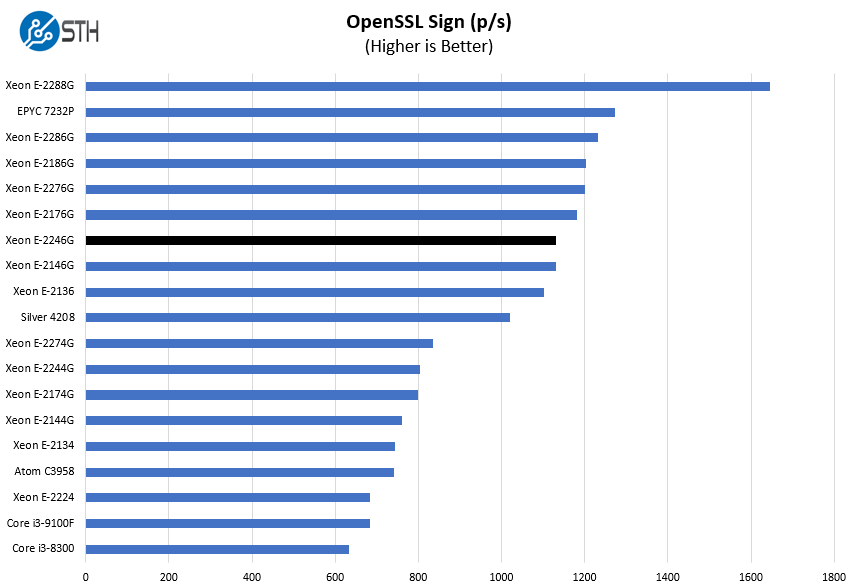
Here are the verify results:
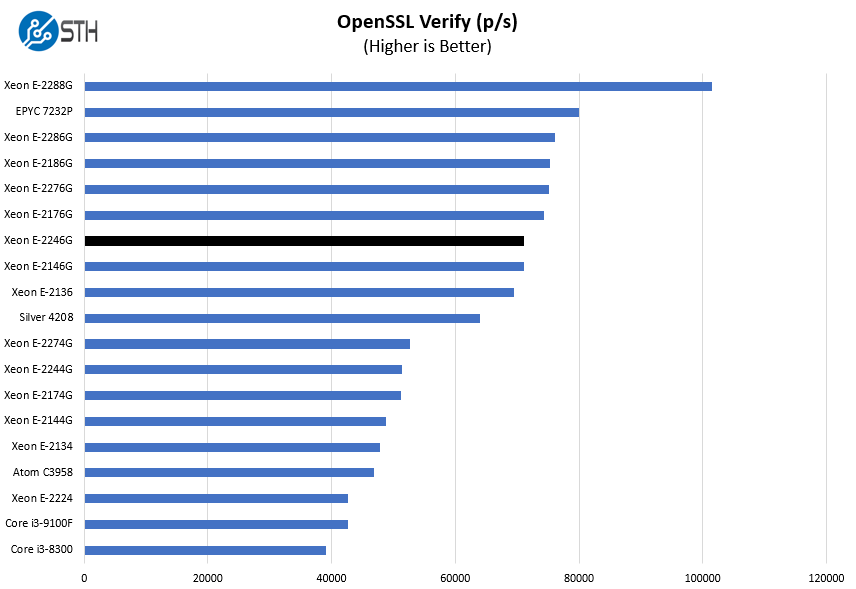
If you want maximum performance in the socket, the new Intel Xeon E-2288G is the way to go. That also helps set a top-end for performance in servers that you can use as a guidepost for evaluating the price performance of the Xeon E-2246G with.
UnixBench Dhrystone 2 and Whetstone Benchmarks
Some of the longest-running tests at STH are the venerable UnixBench 5.1.3 Dhrystone 2 and Whetstone results. They are certainly aging, however, we constantly get requests for them, and many angry notes when we leave them out. UnixBench is widely used so we are including it in this data set. Here are the Dhrystone 2 results:
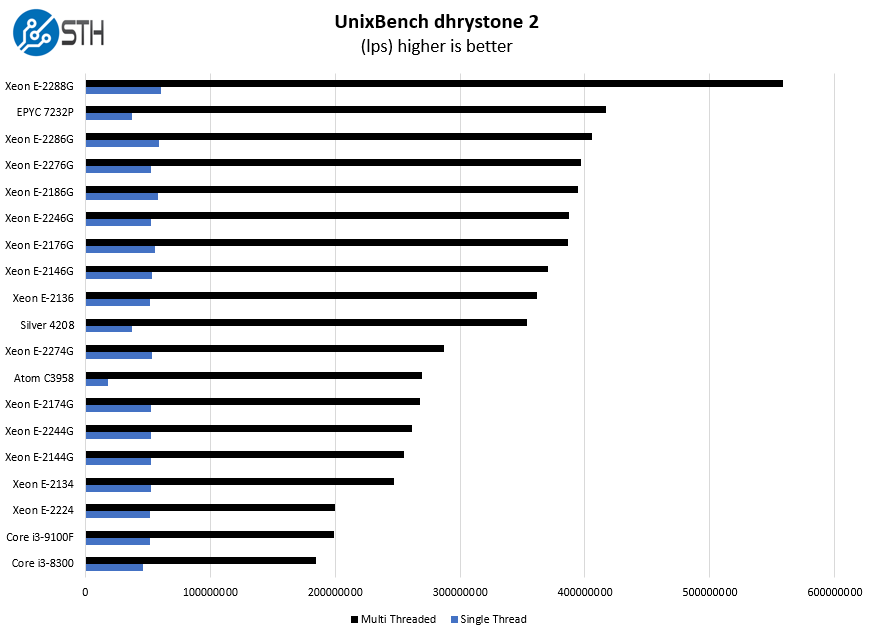
Here are the whetstone results:
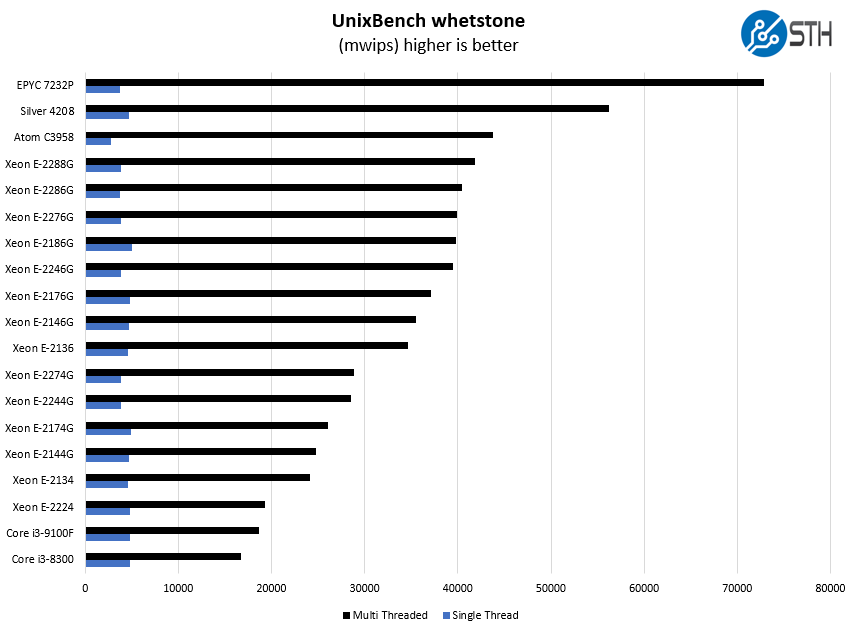
Here we have a lot of results but one can see that if you simply do not need performance, a solution like the Intel Core i3-9100(F) can provide a lot of the performance at the lower-end. If the Xeon E-2288G was the top-end, something like the Core i3 would be one of the lower-end offerings before getting to the Pentium range.
GROMACS STH Small AVX2/ AVX-512 Enabled
We have a small GROMACS molecule simulation we previewed in the first AMD EPYC 7601 Linux benchmarks piece. In Linux-Bench2 we are using a “small” test for single and dual socket capable machines. Our medium test is more appropriate for higher-end dual and quad-socket machines. Our GROMACS test will use the AVX-512 and AVX2 extensions if available.
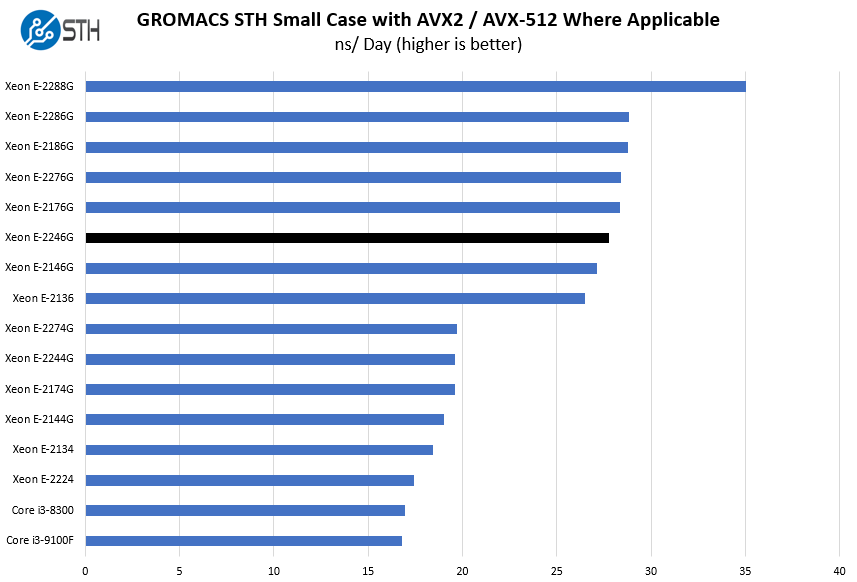
One item we want to note here is that there is an enormous delta between this part and the 4-core parts. While we are talking about small differences between these 6-core chips, there is an enormous delta between this and something like the Intel Xeon E-2274G. While The E-2274G may sound higher numerically, the E-2246G has vastly better performance.
Chess Benchmarking
Chess is an interesting use case since it has almost unlimited complexity. Over the years, we have received a number of requests to bring back chess benchmarking. We have been profiling systems and are ready to start sharing results:
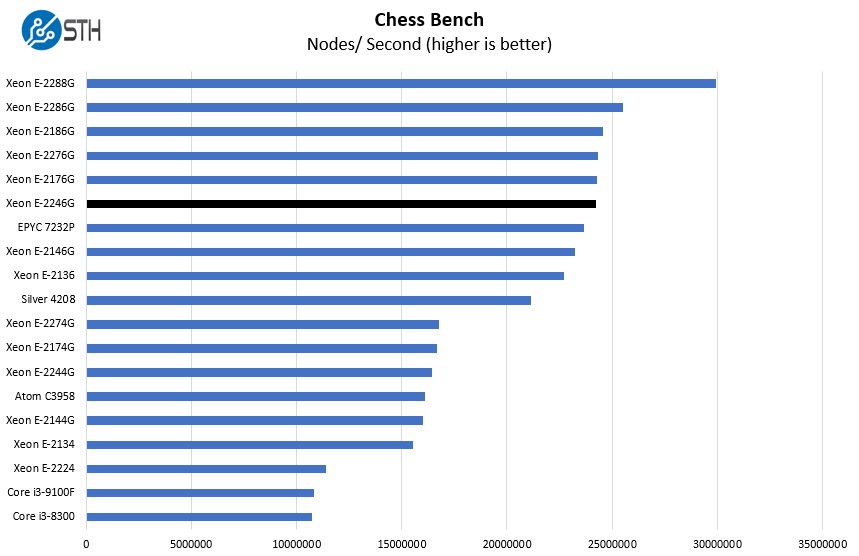
On the chess side, we see similar results. We also wanted to point out that we have a few results from the Intel Atom C3958 here, and in other charts. The 16-core Atom part uses less power and has what may be a better platform for the embedded market. With six more robust cores and twelve threads clocked higher and with a higher TDP, the Xeon E-2246G generally is faster by a significant margin.
Next, we are going to have power consumption, market positioning, and our final words.




ASRock Rack:
– X570D4I-2T
– X470D4U2-2T
– X470D4U
Copy/paste